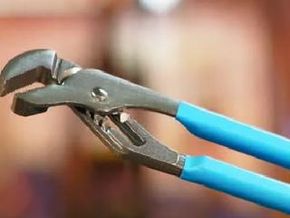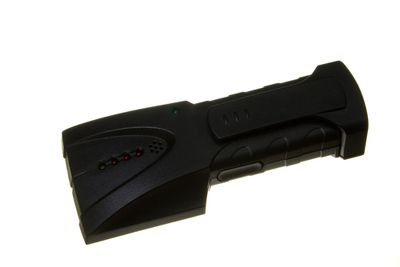Slip-joint pliers are versatile tools that are used for gripping and bending hardware. They have two levels of teeth; the fine teeth located near the front are designed for gripping small objects and nails, while the coarse teeth located toward the back are designed for gripping bulky nuts and bolts. The advantage of the slip-joint pliers is that it has a pivot that can adjust its jaw size, allowing you to work with objects of varying sizes. A slot in the neck allows the pivot to slide between the two positions.
Slip-joint pliers are useful for a variety of household repairs such as replacing a sink drain basket, repairing a kitchen faucet, doing auto repairs and installing hoses. You can use them to hold a nut steady while loosening a screw with a screwdriver, to bend or straighten a small nail, to cut a thin wire or to compress a light clamp. In addition, slip-joint pliers can be used for grasping tools like screwdriver handles or chisels. They are even advertised as a necessary piece of medical equipment for handling wires, pins and rods.
Advertisement
Never use slip-joint pliers as a hammer since they may crack or break. In addition, they shouldn’t be exposed to excessive heat since the heat might ruin the material in the tool. Some slip-joint pliers have comfort grips; however, you should be aware that these grips do not necessarily protect against electric current. One drawback to slip-joint pliers is that they shouldn’t be used for anything that has to be held really tight, as they sometimes slips out of place.
When purchasing a pair of slip-joint pliers, choose a long-lasting, quality material. Check that the surfaces are even and that the teeth are sharp. Dull teeth may cause the pliers to slip, which can lead to injury. In addition, make sure the handles open smoothly and don’t wobble at the pivot.
Advertisement



